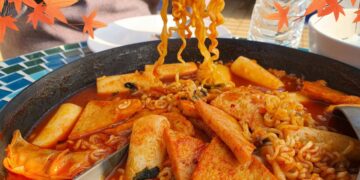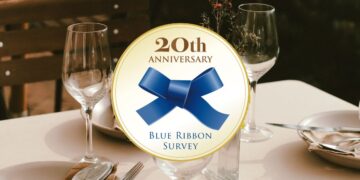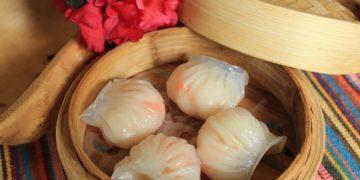Last Updated on 1 year by admin
Discover Seoul’s top fine dining spots from the Blue Ribbon Survey, featuring standout restaurants in South Korea.
Seoul’s dining scene is thriving, with the Blue Ribbon Survey’s latest list spotlighting top restaurants that bring diverse flavors and expert craftsmanship to the table. From Korean royal cuisine and French fine dining to Japanese dishes with a Korean twist, these award-winning spots offer unique culinary experiences, each celebrated for their dedication to quality and creativity. Here’s a look at some of the must-visit restaurants redefining fine dining in Korea’s capital.
What is Blue Ribbon Survey?
The Blue Ribbon Survey in Korea is a prestigious guide that reviews and ranks restaurants across the country, akin to the Michelin Guide but with a distinctly Korean approach. Essentially, it is Korea’s pioneering local restaurant guide, a trusted culinary compass. Launched in 2005, it’s highly respected for its detailed, insider perspective on the Korean dining scene. It offers locals and tourists an authentic look into both popular and hidden culinary spots. Like the Michelin Guide’s star system, it awards ribbons—one to three—to spotlight the country’s top restaurants.
Over 20 years, the Blue Ribbon Survey has honed objective criteria for restaurant assessment, creating a comprehensive standard within Korea’s dining scene. The survey evaluates restaurants based on food quality, service, and ambiance, with top-rated establishments receiving the signature “blue ribbon” designation. The survey categorizes restaurants by cuisine type, price range, and dining experience, making it a go-to resource for a wide audience—from fine dining enthusiasts to street food explorers.
Recently, the “Seoul’s Restaurants 2025” list was unveiled, recognizing 41 top restaurants in Seoul, with six elite establishments earning three ribbons. A single ribbon means the restaurant is “worth making time to visit again,” two ribbons mean it’s “worth recommending to others,” and three ribbons honor places that demonstrate “the most outstanding skill in their field.”
Seoul’s Restaurants 2025
Korea House
Korea House, a premier Korean royal cuisine restaurant operated by the Korea Heritage Agency (KHA), recently earned a spot on the Blue Ribbon Survey’s Seoul’s Restaurants 2025 gourmet list. It stands out as the sole fine dining establishment specializing in royal cuisine inspired by the Joseon Dynasty (1392-1910).
Situated in Jung District, central Seoul, Korea House honors historical culinary traditions by meticulously recreating dishes based on ancient recipes and sourcing rare ingredients native to Korea. Chef Cho Hee-sook, the “godmother of Korean food,” and Kim Do-seop, leader of the Korean food research team are at the helm of Korea House. They infuse these traditional royal meals with both authenticity and innovation. Their work helps Korea House not only preserve but also promote the rich culinary heritage of Korean royal cuisine to a contemporary audience.
Byeokje Galbi the Cheongdam
Byeokje Galbi the Cheongdam, a high-end Korean restaurant in Seoul’s upscale Cheongdam-dong neighborhood, has earned acclaim for its barbecued hanwoo (Korean beef) short ribs. Opened in 2022 by the Byeokje Galbi franchise, the restaurant recently achieved a prestigious three-ribbon rating from the Blue Ribbon Survey.
The survey highlighted the luxurious interior, refined tableware, and exclusive dining experience, where guests savor a Korean beef course meal, expertly prepared and grilled by the chef in private dining rooms.
KANG MINCHUL Restaurant
KANG MINCHUL Restaurant, located in the Cheongdam-dong area of southern Seoul, offers an exceptional French fine dining experience crafted by Chef Kang Min-chul. Chef Kang Min-chul, known for his meticulous approach, personally prepares meals at his namesake restaurant. Since opening in 2021, the restaurant quickly gained recognition, earning a Michelin star just a year later. Chef Kang, who trained under culinary masters like Joël Robuchon, Alain Ducasse, and Pierre Gagnaire, presents a course menu that reimagines classic French cuisine with meticulous attention to detail.
The Blue Ribbon Survey praised KANG MINCHUL Restaurant for its intricate plating and performance, highlighting it as a destination where diners can enjoy main dishes paired with thoughtfully crafted sides. This sophisticated presentation and high-quality cuisine have made it a highly popular choice for fine dining enthusiasts in Korea.
Myongwolgwan
The Vista Walkerhill Seoul hotel operates Myongwolgwan, a distinguished Korean restaurant in Gwangjin District, recently awarded three ribbons by the Blue Ribbon Survey. Specializing in Korean-style beef, Myongwolgwan serves standout dishes like galbi (beef short ribs) grilled over premium charcoal.
The restaurant has earned praise for its popular Janghyang Galbi, seasoned with traditional soybean paste. Guests also enjoy the Hanwoo Galbitang, a flavorful Korean short rib soup available on the a la carte menu, making Myongwolgwan a top destination for authentic Korean beef cuisine.
Solbam
Chef Eom Tae-jun’s fine dining restaurant, Solbam, earned a three-ribbon rating from the Blue Ribbon Survey for its innovative approach to Korean cuisine. Named after a place in Andong, North Gyeongsang Province, where Chef Eom spent his childhood, Solbam offers a contemporary take on traditional Korean flavors. Chef Eom, who honed his skills at New York’s Eleven Madison Park and Seoul’s L’impression, crafts a unique 12-course menu with original and delicate dishes.
The dining experience flows seamlessly, enhanced by head sommelier Ko Dong-yeon’s inventive wine pairings and pastry chef Hwang Se-hee’s exquisite desserts, creating a memorable and harmonious meal that reflects both creativity and culinary heritage.
Mitou
Japanese cuisine also claimed a top spot on the list, with Mitou, led by chef duo Kwon Young-woon and Kim Bo-mi, earning high praise for its Japanese dishes infused with Korean influences. Food critics recognize Mitou for its sophisticated approach, blending the delicate qualities of Japanese cuisine with subtle Korean accents.
To ensure top-quality ingredients, the chefs take a hands-on approach, directly sourcing rice, vegetables, and chicken. They even cultivate their own produce, raise chickens, and make house-made miso, overcoming challenges in sourcing ingredients locally. This dedication results in a refined dining experience that honors both Japanese and Korean culinary traditions.
Related Posts
8,448 total views, 14 views today

















